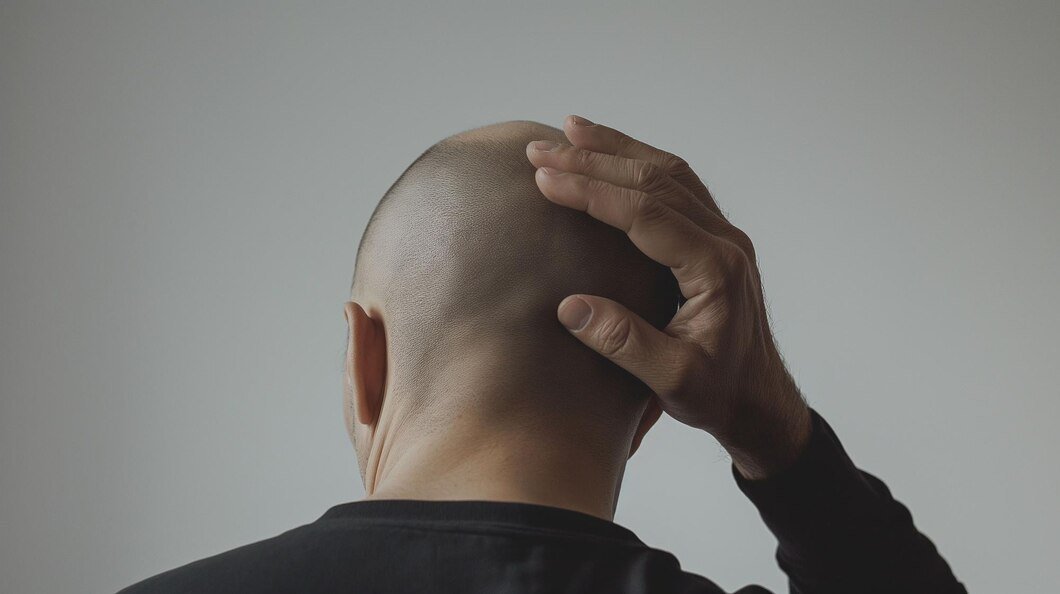Understanding Alopecia Areata: Causes, Symptoms, and Treatment Options

Alopecia Areata Treatment in Bandra | Bliss Skin & Dental Clinic
What is Alopecia Areata?
Alopecia areata is an autoimmune disorder that causes hair loss. In this condition, the body’s immune system mistakenly attacks the hair follicles, leading to hair loss on the scalp, face, and other parts of the body.
Types of Alopecia Areata:
There are three main types of alopecia areata, each with varying degrees of hair loss:
- Alopecia areata (patchy hair loss): The most common type, characterized by round or oval patches of hair loss on the scalp.
- Alopecia totalis: Complete hair loss on the scalp.
- Alopecia universalis: The most severe form, involving complete hair loss on the scalp, face, and body.
What Causes Alopecia Areata?
While the exact cause of alopecia areata is unknown, it is considered an autoimmune disorder. This means the body’s immune system mistakenly attacks healthy cells, in this case, the hair follicles. Certain factors may trigger alopecia areata in individuals with a genetic predisposition, including:
- Genetics: Having a family history of alopecia areata increases the risk.
- Other autoimmune diseases: Individuals with other autoimmune conditions like thyroid disease, vitiligo, or lupus are at an increased risk.
- Environmental factors: Stress, viral infections, or certain medications may trigger the onset of alopecia areata in susceptible individuals.
Signs and Symptoms of Alopecia Areata
Alopecia areata typically presents with one or more of the following symptoms:
- Patchy hair loss: One or more smooth, round patches of hair loss, usually the size of a coin or larger.
- Exclamation mark hairs: Short, tapered hairs at the edges of bald patches, resembling an exclamation point.
- Widespread hair loss: In some cases, hair loss can progress to involve the entire scalp (alopecia totalis) or even the entire body (alopecia universalis).
- Nail changes: Pitting, white spots, lines, or roughness on fingernails and toenails.
Diagnosing Alopecia Areata
Dermatologists typically diagnose alopecia areata based on clinical examination and medical history. They may:
- Examine the scalp: Observe the pattern and extent of hair loss.
- Perform a hair pull test: Gently pull on hairs at the edge of a bald patch to assess for easy detachment.
- Conduct a scalp biopsy: Examine a small sample of scalp tissue under a microscope to confirm the diagnosis and rule out other conditions.
- Order blood tests: Rule out other autoimmune disorders or underlying medical conditions.
Treatment Options for Alopecia Areata
While there is no cure for alopecia areata, various treatments can help manage the condition and promote hair regrowth. Treatment options may include:
- Topical medications: Corticosteroids, minoxidil, or immunotherapy medications applied directly to the scalp.
- Injections: Corticosteroid injections into the affected areas to suppress the immune response and stimulate hair growth.
- Oral medications: Systemic corticosteroids or other immunosuppressant drugs in severe cases.
- Light therapy: Exposure to ultraviolet (UV) light under controlled conditions.
- Alternative therapies: Acupuncture, aromatherapy, or massage therapy may provide some relief from stress and promote overall well-being.
Living with Alopecia Areata
Coping with alopecia areata can be emotionally challenging. Support groups and counseling can provide emotional support and help individuals adjust to the condition.
Schedule a Consultation
- Phone:
- For Appointments: +91 9322 122 111
- General Inquiries: +91 9323 133 222
- Website: Bliss Hair, Skin & Dental Clinic: https://blisskindental.com
- Social Media:
- Facebook: Bliss Hair, Skin & Dental Clinic Facebook Page: https://www.facebook.com/blisskindental
- Instagram: Bliss Hair, Skin & Dental Clinic Instagram: https://www.instagram.com/blisskindental/
- YouTube: Bliss Hair, Skin & Dental Clinic YouTube Channel: https://www.youtube.com/@blisskindentalpolyclinic4874
Location:
- Address: Bliss Hair, Skin & Dental Clinic, 6 Hilton Apartment, 35-A Hill Road, Bandra-50 AS, Opp Alco Shopping Centre, Mumbai – 400 050
- Google Maps: Bliss Hair, Skin & Dental Clinic on Google Maps: https://g.page/BestskinDermatologistinBandra?gm
You can even find us on :
- Bliss Hair, Skin & Dental Clinic on Justdial: https://www.justdial.com/Mumbai/Bliss-Skin-And-Dental-Polyclinic-Metropolis-Lab-Opposite-Elco-Shopping-Centre-Bandra-West/022PXX22-XX22-171014154721-E2I4_BZDET
- Bliss Hair, Skin & Dental Clinic on Practo: https://www.justdial.com/Mumbai/Bliss-Skin-And-Dental-Polyclinic-Metropolis-Lab-Opposite-Elco-Shopping-Centre-Bandra-West/022PXX22-XX22-171014154721-E2I4_BZDET
- Bliss Hair, Skin & Dental Clinic Featured on Top Rated: https://www.justdial.com/Mumbai/Bliss-Skin-And-Dental-Polyclinic-Metropolis-Lab-Opposite-Elco-Shopping-Centre-Bandra-West/022PXX22-XX22-171014154721-E2I4_BZDET
- Bliss Hair, Skin & Dental Clinic on Yappe: https://www.blissdentallv.com/
- Bliss Hair, Skin & Dental Clinic on Drlogy: https://blisskindental.com/

